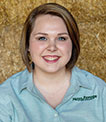CRP hay offers good news and bad news |
| By Bob Charley |
|
|
 Conservation Reserve Program (CRP) land is not typically harvested in a timely fashion, or at all; however, during times of drought, CRP acres may become available for haying or grazing. That’s been the case in many counties this year. Illinois Extension agent Travis Meteer explains that the good news is that haying and grazing opportunities on CRP land are fairly economical. This forage can extend your grazing season into winter months, but because of CRP’s nature, the forage found on this land isn’t usually of high quality. The bad news is that without being harvested earlier in the season, the mature hay will be low to moderate in crude protein (8% to 10%) and low in energy (less than 50% total digestible nutrients or TDN). The overly mature forage will likely be long stemmed, causing the rumen to work harder to digest it. Meteer states, “It should be viewed as a feed ingredient, not the entire diet.” He recommends testing your CRP hay and supplementing the animal’s diet accordingly. Supplemental protein will be needed to help feed rumen microbes and ensure proper digestion. CRP hay can also have other issues other than poor quality. The low maintenance of these forage fields enhances the chances of weed contamination. “If you are feeding CRP hay on existing pastures, be aware that you may be introducing numerous weeds to your pasture,” the extension specialist notes. Managing where you feed baled CRP hay can reduce the chances of weeds infesting your pastures through seed consumption and natural manure dispersal. Even though CRP hay comes with a list of warning labels, Meteer claims, “At least it provides something for cows to keep their bellies full and offers a base forage for their diet.” Managed properly, CRP hay and grazing opportunities can extend your grazing season and provide your operation with other short-term benefits.  C.J. Weddle C.J. Weddle served as the 2020 Hay & Forage Grower editorial intern. She currently attends Mississippi State University, majoring in agricultural education, leadership, and communications. She grew up on a farm in Vardaman, Miss., where her family raises sweet potatoes and soybeans. |
